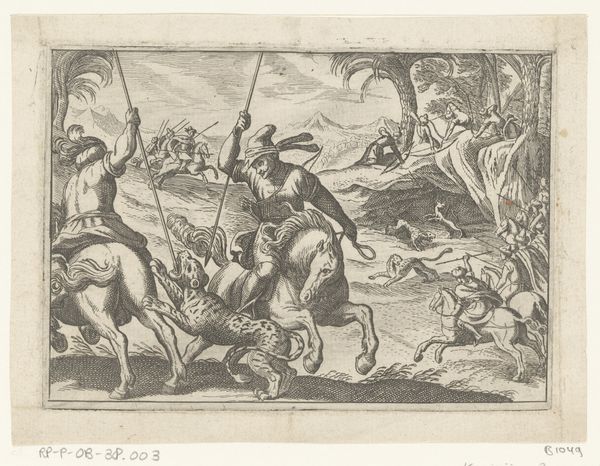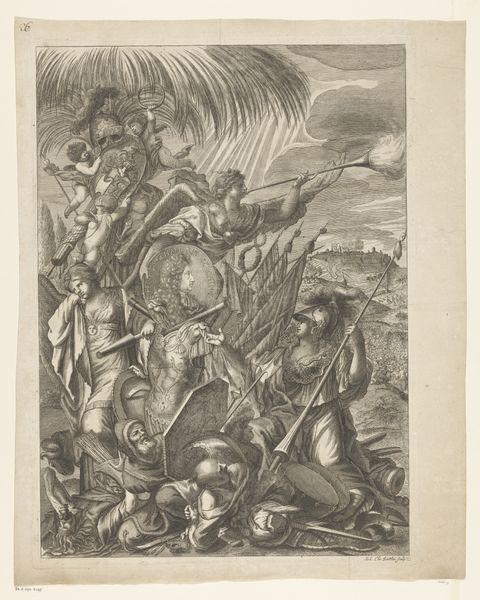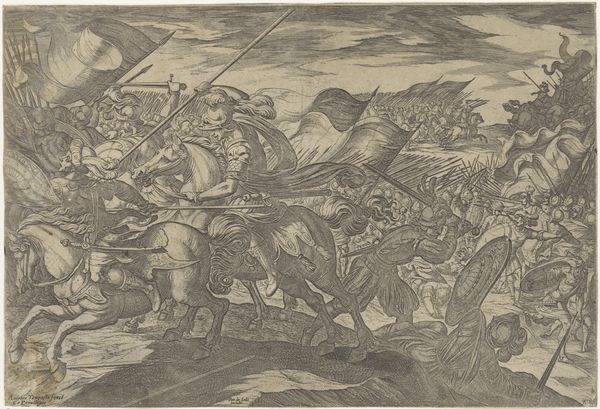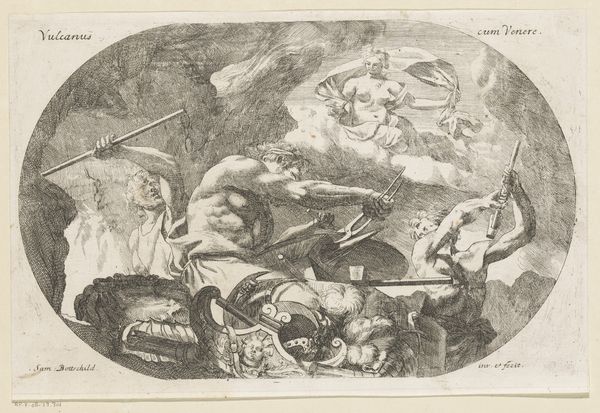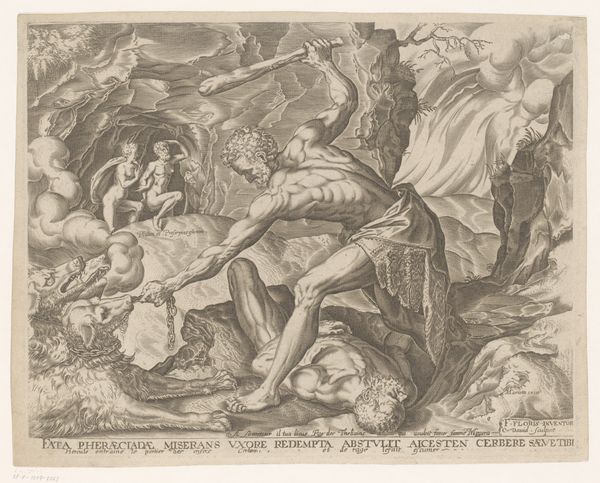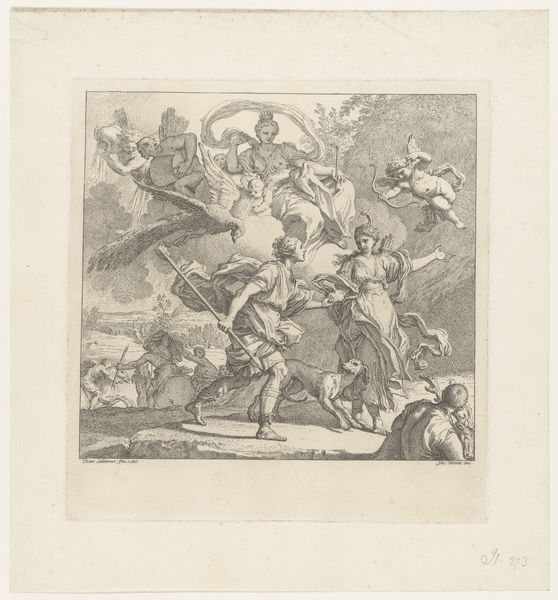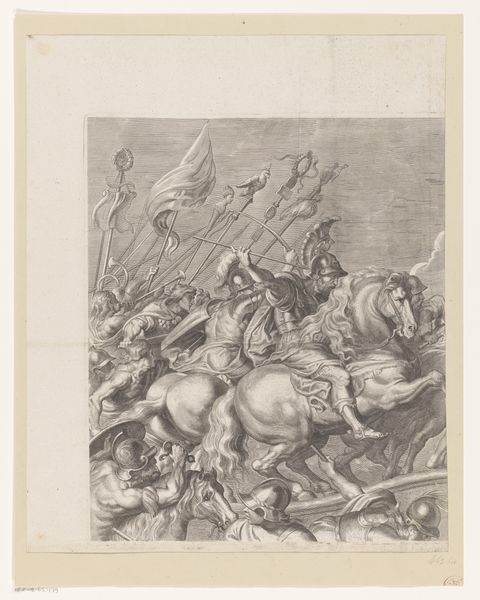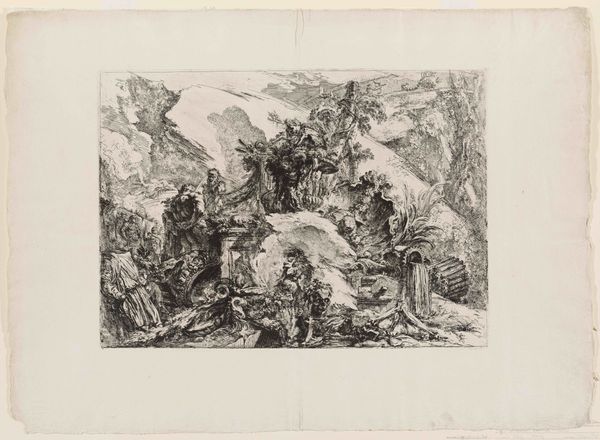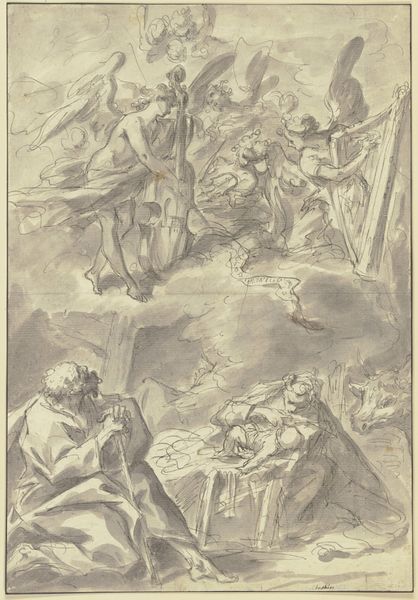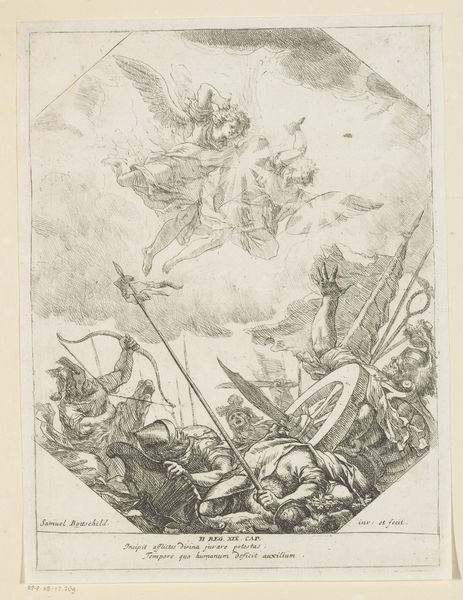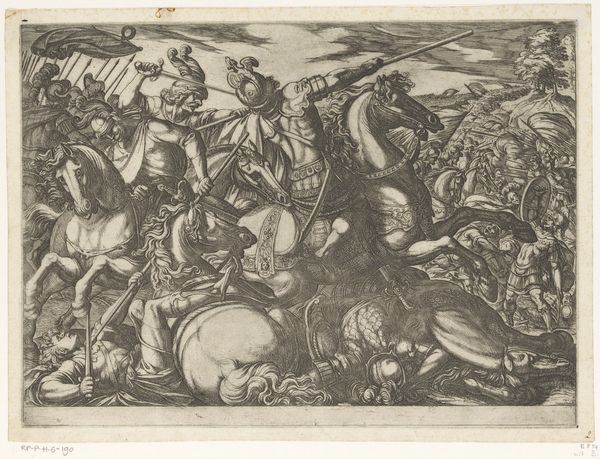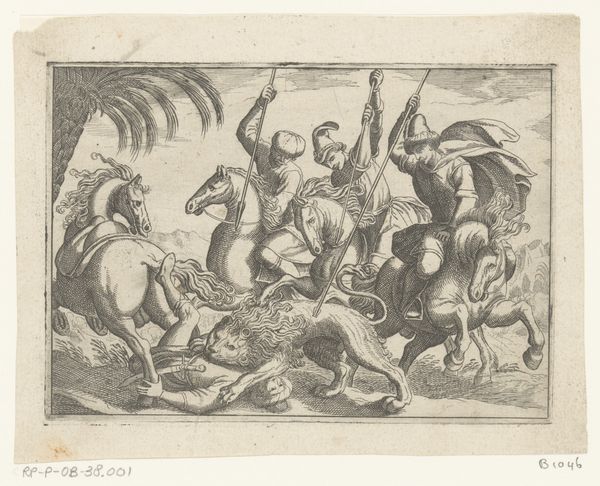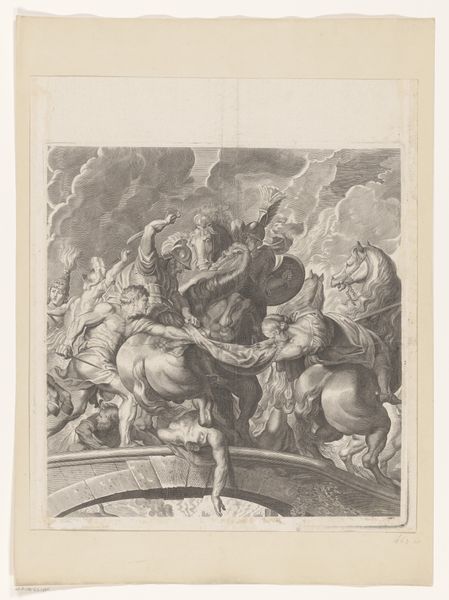
#
pencil drawn
#
toned paper
#
light pencil work
#
pen sketch
#
pencil sketch
#
pencil drawing
#
ink drawing experimentation
#
pen-ink sketch
#
sketchbook drawing
#
pencil work
Dimensions: height 248 mm, width 346 mm
Copyright: Rijks Museum: Open Domain
Editor: So, this is Giulio Sanuto's "Christ Walking on Water," created in 1548. It’s a pen and ink drawing. The scene is quite turbulent; everyone in the boat looks so distressed! How do you interpret this work, given the era it was created in? Curator: Looking at this image through the lens of the mid-16th century, it’s difficult to ignore the context of religious upheaval. The dramatic, almost chaotic composition, isn't simply about a biblical miracle. It also reflects the anxieties of a society grappling with shifting religious and political landscapes during the Reformation. Consider the symbolism: Christ, seemingly detached, while those in the boat – representing the Church and its followers – struggle against the stormy waters, against doubt, and persecution. Editor: That’s a powerful reading. So, the “storm” isn't just a literal storm? Curator: Exactly. The tempest becomes a metaphor for the challenges to religious authority. Who is truly in control, and whose faith will prevail? Note how the artist has rendered light and shadow; it really underscores the prevailing uncertainty. Where does ultimate salvation truly lie, according to Sanuto’s print? Is it in earthly power or the divine? Editor: The expressions on the people's faces… some look terrified, some pleading. Do you think the artist takes a position or merely reflects the tumult? Curator: Sanuto avoids a clear-cut endorsement. By presenting the scene this way, he encourages viewers to engage with these questions themselves. The artwork becomes a mirror, reflecting their own hopes, fears, and convictions in a fractured, conflicted world. Think of it as a call for societal reflection on issues that affect everyone regardless of religious background: the nature of belief and the responsibility leaders owe the collective. Editor: I never considered the socio-political climate, and it definitely brings a deeper meaning to this piece. Curator: Precisely. Art doesn't exist in a vacuum. By understanding its historical and social context, we see its full potential. Hopefully it inspires reflection for us, even today.
Comments
No comments
Be the first to comment and join the conversation on the ultimate creative platform.
